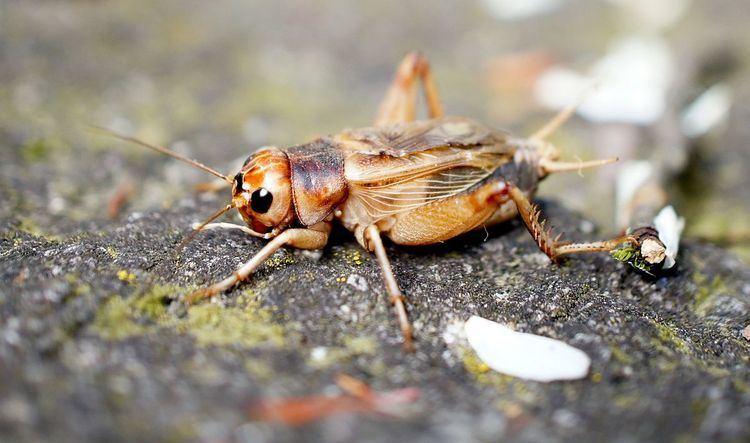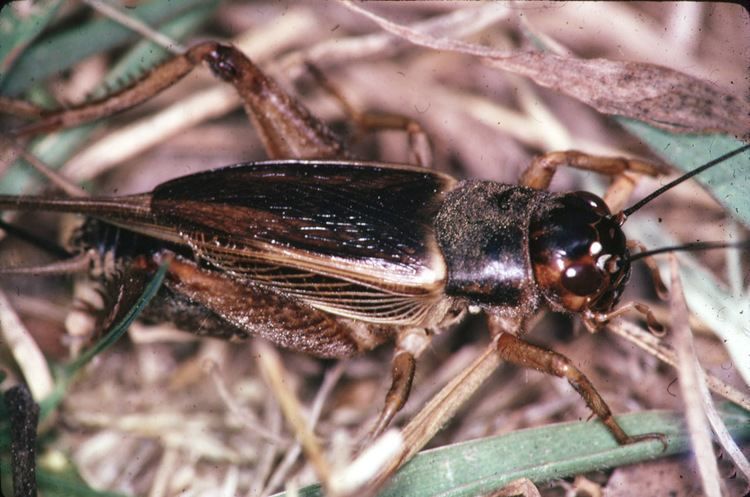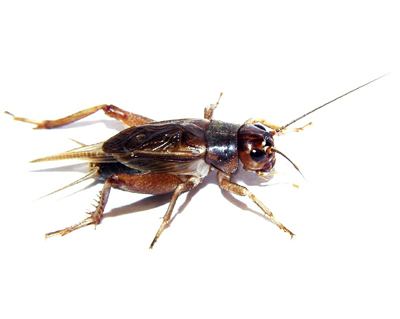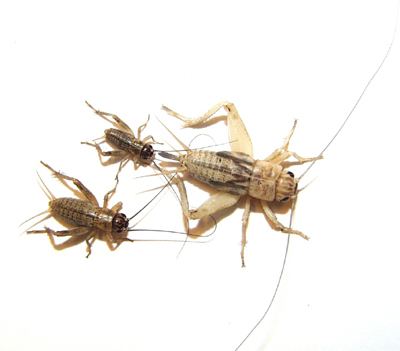Family Gryllidae Higher classification Gryllus | Genus Gryllus Rank Species | |
 | ||
Similar Cricket, Gryllus, House cricket, Insect, Gryllus bimaculatus | ||
Gryllus assimilis part 4
Gryllus assimilis, commonly known as the Jamaican field cricket, is one of many cricket species known as a field cricket. It is found in the West Indies, southern United States, Mexico and South America.
Contents
- Gryllus assimilis part 4
- Taxonomy
- Subspecies
- Distribution and habitat
- Call
- Confusion of Gryllus locorojo with Gryllus assimilis
- References

Taxonomy

At one time, many field crickets found in the eastern states of the United States were assumed to be a single species and were referred to as Gryllus assimilis. However, in 1932, the entomologist B. B. Fulton showed that four populations of field cricket in North Carolina, that were morphologically identical and which were all considered to be G. assimilis, produced four different songs. It was further observed that though some had overlapping habitats, each population had different seasonal life cycles and were unable to cross-breed. Further investigation led to the acceptance of a species complex comprising eight species in the eastern states, including two that have indistinguishable songs but different seasons of activity, and one where the males are mute. Once these eight species were distinguishable by song, tiny morphological differences were discovered between them, such as the precise number of teeth on the stridulatory mechanism. None of these species are the Jamaican field cricket, which was first described in 1775 by the Danish zoologist Johan Christian Fabricius, the type locality being Jamaica.
Subspecies
There are two subspecies :

Distribution and habitat

Gryllus assimilis occurs in the West Indies, southern United States, Mexico and parts of South America. In the United States, it is limited to Florida and southern Texas. Its typical habitat is weedy fields, roadside verges, lawns and rough pasture.
Call

The call, issued only by the male, is a short, pulsed chirp emitted at intervals of about one second. The pulse rate is rapid and the intervals between the pulses brief, so each chirp sounds like a continuous sound. Because they produce less noise than many other field crickets, they are often called "Silent Crickets" when sold commercially as pet food.
Confusion of Gryllus locorojo with Gryllus assimilis
The other species, Gryllus locorojo, different morphologically and by its songs, also known as "crazy red" or "banana cricket", is often confused with Gryllus assimilis. Gryllus locorojo has a medium-large body, long or short winged, typically reddish/brownish colored head with three or four longitudinal stripes visible even in specimens with darker heads. According to Varvara Vedenina, Russian Academy of Sciences, Moscow: "The cricket culture under name "Gryllus assimilis" came to the Moscow Zoo from the Berlin Zoo in the beginning of the 1990s. No details are known. A bit latter, in 1997, the cricket eggs under name "Gryllus argentinus" came from Paris Museum of Natural History to St. Petersburg. These eggs definitely originated from Ecuador, since French colleagues returned from an expedition there. Both cultures appear to be identical". This cricket, predominantly known as "Gryllus assimilis" in Russia and Europe (sometimes also referred as "Gryllus argentinus"), was described as a new species by D.B. Weissman and D.A. Gray in 2012 and should not be confused neither with the true Gryllus assimilis nor with the true Gryllus argentinus.
